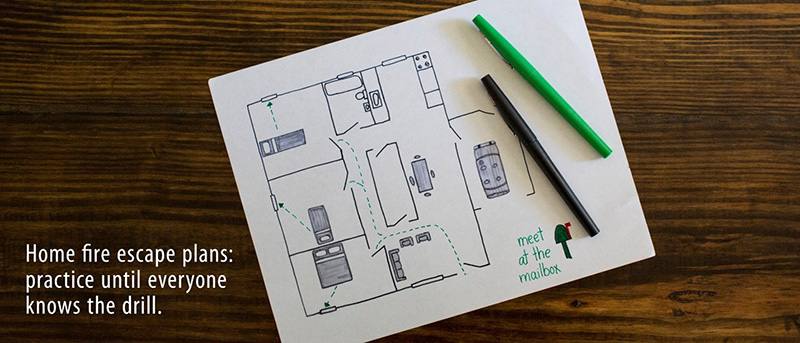Fire Escape Plans: Could Your Family Get Out in Two Minutes?
10.9.2024 | Heather Cooper
 Fire drills. You’ve probably done these at work; your kids do these at school. But data show that we’re more likely to encounter a fire at home than at work or school, yet only about 1 out of 3 adults say they have created AND practiced a home fire escape plan. Why don’t we practice our fire escape plans at home like we do at work or school?
Fire drills. You’ve probably done these at work; your kids do these at school. But data show that we’re more likely to encounter a fire at home than at work or school, yet only about 1 out of 3 adults say they have created AND practiced a home fire escape plan. Why don’t we practice our fire escape plans at home like we do at work or school?
This week is National Fire Prevention Week, so it’s the perfect time to get serious about your home fire escape plan.
Why is practice so important?
Years ago, people had more time to get out of burning buildings, but with changes to the way homes are built and what’s inside them, houses burn much more quickly than they used to. Experts recommend that every person in the house be able to exit in 2 minutes or less. That’s not a lot of time. In the event of a real fire, your child will likely be scared and confused, so practicing helps your child remember what to do when emotions are running high. Practice will help everyone in your family for the same reason.
Here are some tips to remember:
- Decide on a plan. The National Fire Protection Association and the American Red Cross have resources to help you design a plan.
- If they’re old enough, involve your child in mapping your home for your family’s escape plan.
- Before your drill, walk through the plan with your family. Show them the routes out of each room. Make a note of any equipment you need to buy, such as smoke alarms or fire escape ladders. Test windows and doors to make sure they open.
- Explain to your child why safety planning, like practicing fire drills, is important. Listen to their concerns and answer any questions they have.
- Start with untimed drills during the day. As your family becomes more comfortable with their escape routes, try practicing at different times during the day and at night.
- Pretend it’s a real fire: stay low by crouching or crawling, test doors for heat with the back of your hand, and set up fire escape ladders if needed.
- Aim to get everyone to the meeting spot outside of your home in two minutes or less.
Hear the beep where you sleep
About half of home fire deaths happen between 11 p.m. and 7 a.m., when most people are asleep. Be sure you have smoke alarms on every level of your home and in each bedroom—so that even heavy sleepers will be alerted. Test the alarms once a month, and replace 9-volt batteries every 6 months. The change to and from Daylight Savings Time are good days to do this task. Replace smoke alarms after 10 years. Check the date of manufacture on your alarms to know when they’re 10 years old.